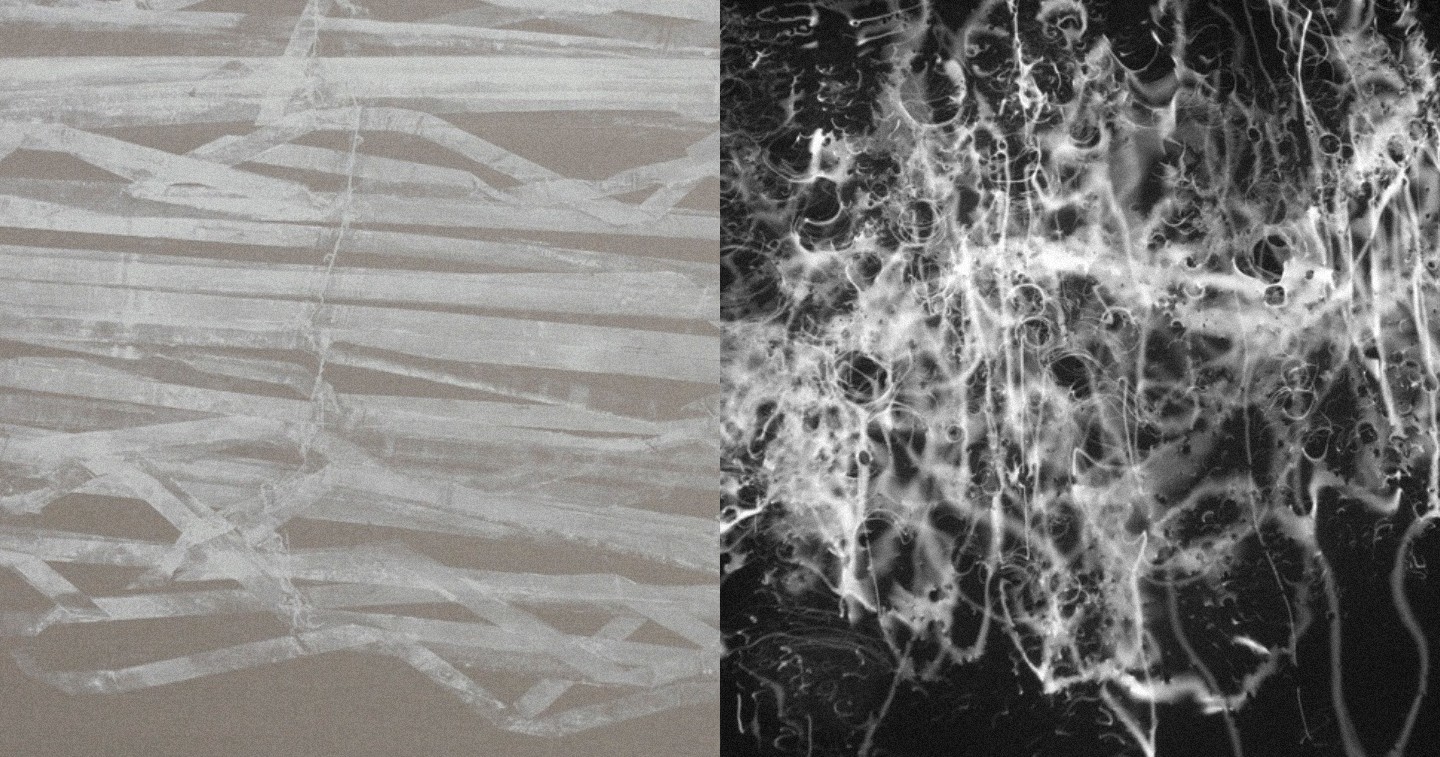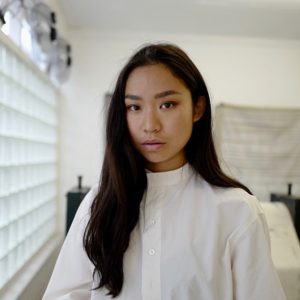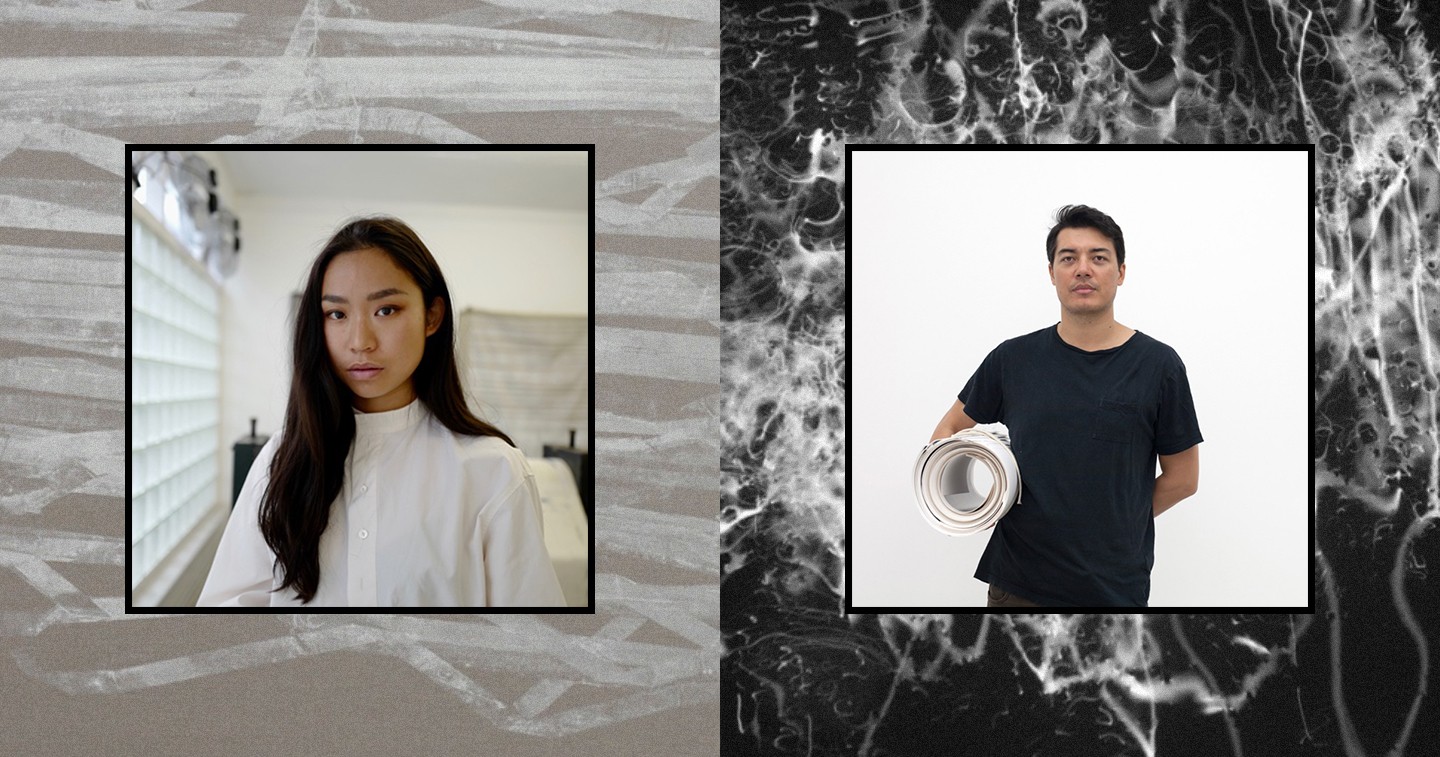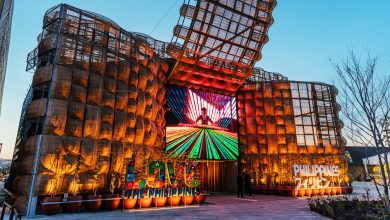MANILA, PHILIPPINES — Silverlens Galleries presents two new exhibitions for the month of February: ‘Exoskeleton’, a solo exhibition by Nicole Coson, and ‘Flux’, a solo exhibition by Frank Callaghan.
Exoskeleton: a solo exhibition by Nicole Coson
words by Carlomar Arcangel Daoana
Silverlens Galleries is proud to present Exoskeleton, the solo exhibition of the London-based, Filipino artist Nicole Coson. In this series composed of large-scale monotype prints that diachronically plots the gradual breakdown of blinds, Coson ruminates on this prosaic architectural solution that negotiates the disclosure/exposure of private life as well as the extent to which the outside may be framed and observed, either through a small gap between the slats or their full retreat into the rail. Invisibility may be calibrated and made tactical; opacity relents to transparency, and vice versa; the angle of sight is what orders the world.
This is the artist’s second solo show with the gallery; her previous one, Camouflage took place in 2017. The new pieces featured here are an extension of Coson’s thesis presentation at the Royal College of Art in London, where she recently completed an MA in Painting. Produced during the pandemic, this series of works was prompted by society’s sudden transformation from public to private. This change, which occurred on a global scale, urged Coson to consider the renewed way in which people viewed the outside world – through the glass of their windows. Through Venetian blinds, a domestic object perceptible both inside and out, Coson subtly communicates society’s seismic shift in a manner that contrasts the volume of its context and import.
With the slats individually painted and laid gradually under the press, the blinds transmit their form onto the cloth—the real made to testify to the illusory representation it forges. Through repeated pressing, the rhythmically meditative horizontal bands unravel, with the slats breaking away from a tightly rigorous pattern to an improvisatory mode sparked by the unforeseen tension between machine, matrix, and medium. Lines buckle, overlap, zigzag. Paint reveals cloth which reveals ultimately nothing: there is no there there (Gertrude Stein). Sequentiality is harmed beyond repair.
The initial promise of revelation gives way to the rude realization that these works are exoskeletal extension of the gallery walls in the same way that the building envelope of the house is the exoskeletal extension of the fragile, vulnerable body—all the more made apparent in the light of the rampaging global infection. At once a seduction and a disavowal of sight, Exoskeleton offers the notion of painting as a membrane, as a dislocated window, as an exquisite disruption to the predictability of vision.

Flux: a solo exhibition by Frank Callaghan
words by Katya Guerrero
This is the artist’s seventh individual presentation with the gallery; his previous ones being Stranger in 2008, Dwelling in 2009, Moonshine Baseline in 2011, Frank Callaghan in 2012, Dead Ends in 2014, and Search/Light in 2017. In these new works, Callaghan shifts his attention away from the moon to capturing moonlight itself, away from seascapes to focus on the surface of the water itself. Desisting from his previous rule of passive observation, the photographer actively explores disruption by intervening into restful scenes to examine a world in disarray. Through long exposures at night with minimal post processing, Callaghan continues to forward the potential of what a single photographic exposure can compress to a surface. Simultaneously, he explores surface can act as an intermediary of meaning.
Using a large makeshift apparatus, Frank Callaghan stands in the middle of a pond under the moonlit sky recording the effects of light as two planks hit the water’s surface.
“There was some comfort in seeing the laws of physics return the water to stillness after every disruption.”
As this process was repeated over many months, the photographs appear as raw black and white mental images moving in constant flux.
Callaghan who is known for exclusively shooting at night states: “But if I think about what I’m looking at when I am making work, it’s light in dark places. It is a subtle light that you almost have to be quiet to see, and feel out. You need to let your eyes adjust. Sometimes you can’t even really see the light before you take the picture, because it’s so dark. The true colors are only revealed through the photographic process, the long exposure.”
“When there is so little light around, it becomes almost theoretical. You can’t see it completely, but you know it is there, and you know how to capture it. So light becomes an idea—a thought or a feeling.”
Presenting a selection of ten large prints distilled from thousands of digital images captured during lockdown the photographer invites the viewer to enter his liminal space. This is Frank Callaghan’s ninth solo exhibition.
‘Exoskeleton’ and ‘Flux’ will be on view onsite until 13 March 2021. These presentations will be ready for online viewing on 10 February 2021 and open for physical viewing the following day. While our space is open, gallery visits are strictly by appointment only. Schedule your visit through bit.ly/Visit-Silverlens. For more information, please contact info@silverlensgalleries.com or reach us at +63 917 587 4011.
About the artists
 Nicole Coson (b. 1992, Manila, lives and works in the UK) aims to examine the concept of invisibility, not only as a passive position as a result of erasure, the problematic dichotomisation of culture but also its potential as an effective artistic strategy. Can invisibility be seen not just as a disability but as an advantage or ability? Like the optical survival strategies utilised by both prey and predator in the natural world? Who can benefit from this tactic of concealment and dissimulation and how can one apply these strategies?
Nicole Coson (b. 1992, Manila, lives and works in the UK) aims to examine the concept of invisibility, not only as a passive position as a result of erasure, the problematic dichotomisation of culture but also its potential as an effective artistic strategy. Can invisibility be seen not just as a disability but as an advantage or ability? Like the optical survival strategies utilised by both prey and predator in the natural world? Who can benefit from this tactic of concealment and dissimulation and how can one apply these strategies?
In her work, Coson explores the economies of visibility and disappearance in the case of overlooked bodies, invisibility in warfare as tactical counter measures, and cultural visibility in art. Coson’s work searches for a productive position within invisibility that lends us an opportunity in which we are able to negotiate the terms of our visibility. To vanish and reappear as we please and as necessary to our own personal and artistic objectives, to effectively disappear amongst the grass blades until the very moment we must break that illusion, the very moment when it is time to strike.
 Frank Callaghan (b. 1980, England) is a Manila-based artist working with photography. His work has been exhibited in Manila, Singapore, Japan, Hong Kong, France, Denmark, and the Unites States. He received the Ateneo Art Award in 2015 for Dead Ends, and was shortlisted for the same award in 2010 for Dwelling and in 2011 for River of Our Dreams. He holds a degree in Economics from the Wharton School of Business of the University of Pennsylvania.
Frank Callaghan (b. 1980, England) is a Manila-based artist working with photography. His work has been exhibited in Manila, Singapore, Japan, Hong Kong, France, Denmark, and the Unites States. He received the Ateneo Art Award in 2015 for Dead Ends, and was shortlisted for the same award in 2010 for Dwelling and in 2011 for River of Our Dreams. He holds a degree in Economics from the Wharton School of Business of the University of Pennsylvania.
Callaghan works almost exclusively at night, using long exposures to shoot in near darkness. He approaches photography as a language, and is interested in its ability to express ideas that words cannot. His practice explores the nature of photography and its mechanisms, like exposure and compression. For Callaghan, “A photograph is an exposure of a light sensitive material to light, that com- presses form, line, colour and shadow to a flat surface. At the same time it can capture and compress energies of other kinds – energies of the artistic process, decisions, traces of memories, emotions, experience, gestures.” Callaghan works in series.
About the writers
Carlomar Arcangel Daoana is an art writer, university instructor, and poet based in Manila, Philippines. The first recipient of the Purita Kalaw-Ledesma Prize for Art Criticism in 2014, he has been chronicling Philippine art in his column, “Subliminal,” for the national broadsheet, The Philippine Star. In 2015, he won the Metrobank Art and Design Excellence (MADE)-Alice Guillermo Art Criticism Award. Yellow Ambiguities, an exhibition which he co-curated with Fr. Jason Dy, SJ at the Ateneo Art Gallery in 2019, explored the historical, political, phenomenological, and spiritual domains of color. For his poetry, he was awarded the Grand Prize in English poetry in the Carlos Palanca Memorial Awards for Literature. Currently, he teaches art writing, literary, and fine arts courses at the Fine Arts Department of the Ateneo de Manila University.
Katya Guerrero is the founder of Luzviminda: Archive of Philippine Photography (www.luzviminda.ph), a platform to introduce Philippine photography to a wider audience. This is an offshoot of her ongoing work at Pioneer Studios (www.pioneerstudios.ph) where she manages the photography, digitization and fine art printing department. A daughter of a photographer-publisher she grew up in a rich environment that enabled her to intuitively understand the photographic processes from conception to print. Since the 1990s, she has consistently worked on creative initiatives to support and promote Philippine art and culture.










